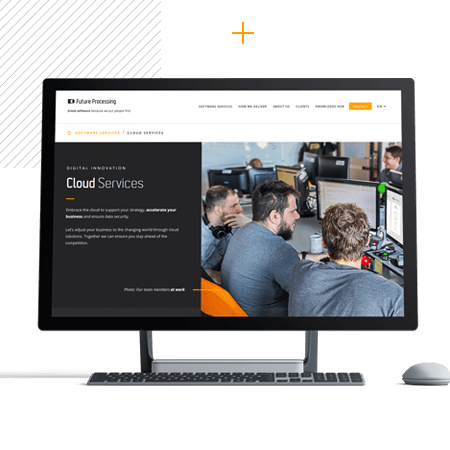
What is the Snowflake cloud data warehouse?
Data - in 2020, there’s no getting away from it. Whether you’re collecting it, storing it or using it, data is at the forefront of every business these days.
One of the biggest conversations regarding data is its storage and, in recent years, cloud storage is the logical choice for most brands. A digital data storage solution, cloud storage, uses multiple servers and is usually managed by a hosting company for a fee. Needless to say, there are plenty of these hosting companies to choose from and, today, we’re going to take a look at an increasingly popular option – Snowflake Cloud Data Warehouse.
Snowflake brings data in from the cold
Launched in 2014 by Bob Muglia in San Mateo, California, Snowflake is a cloud-based data ‘warehouse’ which offers data storage and analytics. Owned by Snowflake Computing, Snowflake is a complete relational ANSI SQL data warehouse which allows businesses to take advantage of data storage and analysis tools. As we’ve mentioned, there are numerous storage facilities to choose from but, what separates Snowflake from the competition is its scalability. Snowflake’s offering separates the storage and computing facilities which allows for more flexibility in the price – something that could make or break for the startup or small business. This works by allowing storage and computing to be scaled independently of one another – so, customers pay only for the capacity and performance that they actually use.
The techy bit
Snowflake uses a mishmash of shared disk database architectures and shared-nothing architectures to expose a relational interface for both structured and semi-structured data. Queries are processed through parallel processing computer clusters and, the architecture is separated into three layers; cloud, query processing and data storage.
Why use Snowflake?
There are a few good reasons for using the Snowflake Cloud Data Warehouse:
- Due to the use of standard SQL query language, Snowflake is super-quick to get up and running
- Snowflake supports the majority of popular data formats such as JSON, Avro, Parquet, ORC and XML
- Snowflake makes it easy to store structured, semi-structured and unstructured data whilst dealing with all of the different data types within one data warehouse
- The scalability that we mentioned earlier lends a more user-friendly ‘pay as you go’ type service to help stretch tight budgets
Snow, how does it work?
Snowflake’s services combine technology partners and solutions partners to offer data management, integration, analysis, business intelligence and training. As Snowflake is optimised for data analysis, your data can be accessed and analysed by unlimited members of personnel or processes.
The great news is that Snowflake offers a free 30-day trial to allow you to figure out if this solution is right for you.
Once you’re all set up, you’ll have access to your personal dashboard from where you can whizz around the site and explore the different options available.
How much does it cost?
As Snowflake’s pricing is based on use and performance, it’s not possible to share an actual pricing guide. Having said that, we are able to give you a rough idea of how much the service will set you back. In general, storage costs start at a flat rate of $23/TB accrued daily through an average compressed amount. Computing costs are $0.00056 per second, per credit for the Snowflake On Demand Standard Edition.
Snowflake – Fair Weather And Foul Weather
They say that nobody’s perfect and, the same goes for data and business services. In that vein, let’s take a look at some of the pros and cons of Snowflake’s chilled offering:
Fair Weather
Let’s check out the good bits about Snowflake Cloud Data Warehouse:
- Scalability – most agree that the flexible nature of Snowflake’s scalability is a real winner when it comes to cost and usability. In fact, this feature is really what sets Snowflake apart from other similar services
- User-Friendly Interface – ideal for those new to the world of data storage and analysis, Snowflake’s interface and dashboard make for really easy navigation. What is more, if you get stuck, there are handy tutorials and videos available on the website
- Features – Snowflake has a few really handy extra features including the Snapshot and Rollback – both of which can help you to get – and keep – your data organised
Foul Weather
Into every life, a little rain must fall – and the following is where Snowflake tends to turn people cold:
- Support – Although there are some useful guides on the website, actual human support is a little harder to get hold of; which can be more than a little bit frustrating when you need help quickly
- Spatial Parts – Unfortunately, Snowflake lets itself down slightly with a lack of geospatial queries as the offering is not as advanced as many users may need
- Moving parts – Some users report technical issues with the system; in particular with connectors and stored procedures; all of which can slow down the use of the system
- Keeping the faith – Once you are signed up to one Cloud provider, you can’t switch to another – so choose carefully
Conclusion
Snowflake does have a fair amount going for it; not least the popular scalability which has a tendency to lead to some really good cost savings. Snowflake is a really solid, easy to use data management system. Although the system is good right now, it could become great by adding a few slightly more sophisticated features as well as improving on spatial parts and queries. For the startup or SME, Snowflake is no doubt a really good place to start when embarking on your big data management adventure. For bigger businesses, however, you may find that you need more advanced and sophisticated features which Snowflake doesn’t currently supply.

Adapt your business to the changing world
Embrace the cloud to support your strategy, accelerate your business and ensure data security.



